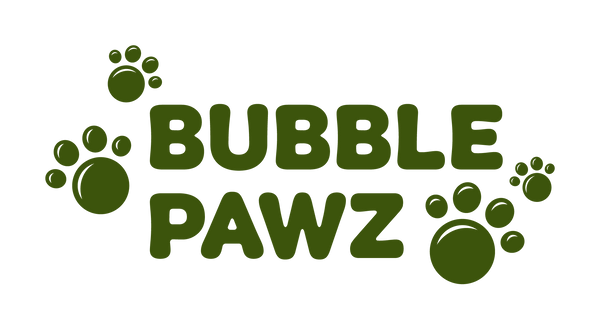
How To Know If Your Dog Has Separation Anxiety
Share
One question that we commonly get asked at Bubble Pawz® is how to know if your dog has separation anxiety. Often it can be hard to tell this apart from mischievous behaviour, an illness or curiosity – especially since your dog can't tell you themselves. That's why we've put together this simple guide to separation anxiety in dogs.
How To Know If Your Dog Has Separation Anxiety
Here are some key signs your dog may have separation anxiety:Upset stomachs
The most common sign that your dog is suffering from separation anxiety is an upset stomach. This leads to diarrhoea explosions, which in some cases leads to Coprophagia, which is when a dog will eat its excrement. It doesn’t happen in every case, as sometimes separation anxiety causes an inability to eat. Neither is particularly pleasant for your dog to experience or for you to come home to and may leave you wondering whether something deeper is going on.
Whilst this may be a possibility, there is a simple way to tell whether your dog’s upset stomach is a side effect of separation or an illness. Ask yourself if this only happens whilst you’re away from home. If so, it's quite possibly separation anxiety.
To combat this, it may be worth having a look at a selection of dog treats to try and tempt your pooch into eating normally again. It may also be worth contacting a vet to see what the most calming foods are for their stomachs if the usual suspects – such as treats infused with turkey - don’t work, or if the problem persists.
Digging and/or destruction
It can be hard not to get angry when you’ve spent time making your home as comfortable as possible for your dog while you go out, only to come home and notice that your pooch has been biting on chair legs, scratching the walls or just generally making a mess. However, what you may first see as an act of disobedience may actually be a sign that your dog is suffering from separation anxiety.
One way in which it’s possible to calm their nerves is to give them one of our organically made chew toys or lay down a lick mat. Both are made with sustainable materials that – when combined with your scent – can be enough to keep your dog’s nerves at bay (and your furniture intact) whilst you work. Leaving your dog with something to keep themselves busy with can protect your dog and your home, as acts of destruction can cause harm, leaving them with damage to their teeth, cut paws and/or broken nails.
Barking and howling
Unless your neighbours have caught you and informed you themselves, or you’ve caught your pooch in the act, it can be difficult to gauge whether or not your dog is barking and howling after you’ve left the house. If they are and this doesn’t usually happen while you're in, it may be triggered by separation anxiety.
There are two main ways in which you can combat your dog’s loud behaviour. The first is by leaving them a selection of toys to distract and comfort them while you're away. However, the second is to research calming tablets or oils for dogs. They can be found either in your local pet shop or by a vet’s recommendation. Such substances are typically made from organic ingredients; however, you must be aware of what you’re giving your dog.
At Bubble Pawz®, we have created a range of dog-friendly treats, toys and grooming products to calm your dog while you're out of the house. Browse our range today.

